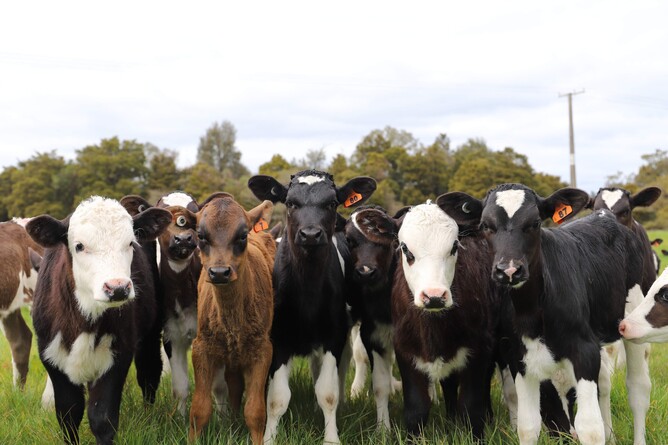Using all the tools in the box to prevent worm burdens from affecting calf growth rates.
Internal parasites (worms) can have a large effect on calf growth rates if not managed correctly. Drenching your calves is important to help reduce worm burdens, but it is just one tool that we should be using in combination with other management strategies.
Maintaining animal health is one of the most important things for ensuring they are able to fight off worm burdens; this includes good nutrition and ensuring trace element levels are correct.
The main roundworms that affect our youngstock are Cooperia and Ostertagia. The lifecycle of both of these worms is around 21 days, under optimal conditions.
Drench intervals
Oral drenches do not have persistence, they only kill the worms present at the time of drenching. So, they need to be given at 28 day intervals. Oral drenches should be used for as long as possible.
Pour-ons or injectables do have persistence, meaning they have killing power for a period after drenching has occurred. These should be given at 42 day intervals.
Drench resistance
Drench resistance occurs when some of the worms survive the drench application and then continue to breed, passing on the resistant genes. It is becoming more common in NZ.
Both Cooperia and Ostertagia have resistance to different drench actives, which is why it is recommended to use a combination product.
FEC testing
The only way to really know what is happening in your calves, is to carry out faecal egg count (FEC) testing. This is a count of the number of eggs in your calves' poo and is the main tool we have to see if worms are present. There are a few different ways we can use FECs:
Before drenching - taking samples before drenching can give an indication of whether the calves need to be drenched or not.
Drench Check - this is where you take a sample 10-14 days post-drench. If there are still eggs present at the drench check, then it is possible the drench is not working as well as expected. A limitation of this is we do not know how many eggs were present before the drench was administered for comparison.
FECRT - Faecal Egg Count Reduction Tests assess resistance by comparing FEC results from before and after drenching. This is the gold standard.
Management options
Grazing management to reduce the larval load:
Don’t let calves graze down low. Most of the parasites are in the base of the pasture so leaving good pasture cover will limit how many worms they are ingesting;
Cross grazing with other species e.g. sheep;
Letting older, undrenched animals follow the calves to ‘clean’ the pasture up.
Refugia - this is a population of parasites that have not been exposed to drench, so are unable to develop drench resistance. Ways to achieve refugia include, but are not limited to:
Following the correct drench interval for your product;
Return a drenched mob on a previously grazed paddock;
Run older, undrenched animals on a paddock recently grazed by a young, drenched mob;
Include some older, undrenched animals in the mob.
Targeted Selective Treatment (TST ) - this involves leaving a portion of animals that are meeting weight gain targets untreated. Care needs to be taken when doing this to ensure growth rates are not affected.
If you would like to do some further reading on management of internal parasites in calves, Wormwise has a great dairy factsheet and a full handbook available to download. DairyNZ has also recently published a podcast on the topic.
We have a number of different drench options available for calves, so give one of the large animal team a call to discuss the best option for your farm.

